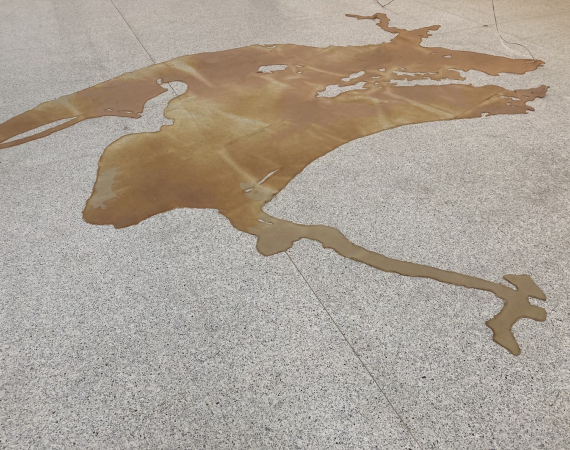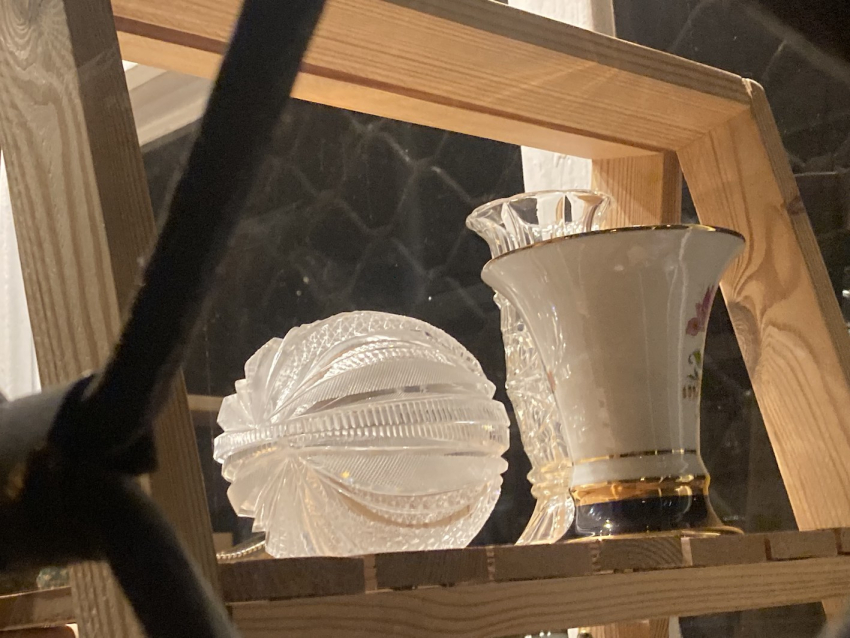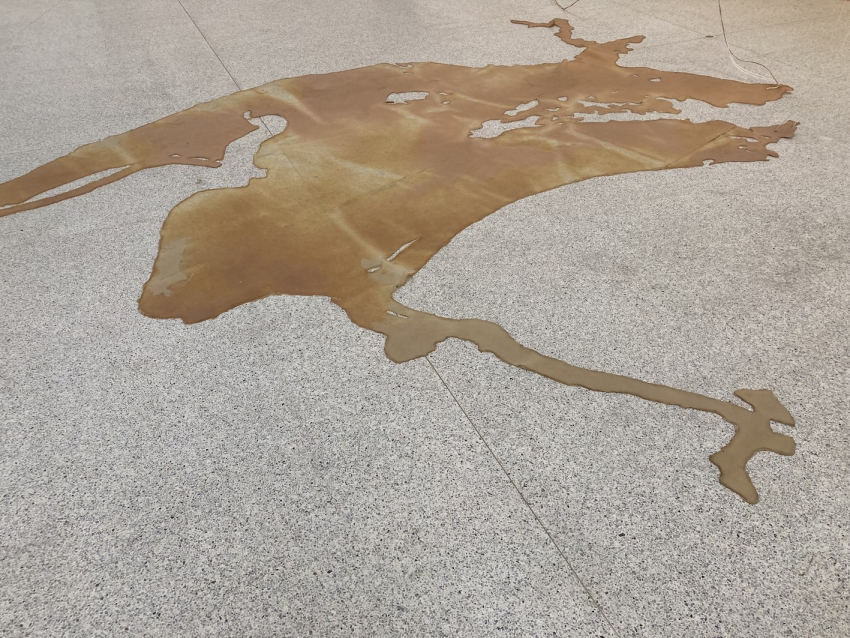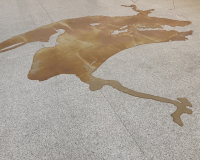Posted on Tue 20 Jun 2023
Prague Quadrennial 2023
Ecological approaches to design for performance and how technology might fit in (or not).

Posted by

Alison Neighbour
Alison is a scenographer, theatre designer, and performance maker, interested in using art to activate and empower communities and to connect people and place.Project
The Prague Quadrennial is an international festival of performance design, hosted every 4 years in the Czech capital. It sees designers and scenographers from across the globe come together for 10 days of exhibitions, discussions, workshops, and performances.
Performance designers don’t tend to meet each other very often, so this event is a pretty big deal and an opportunity to find out what has been important for artists in each of their countries over the past four years.
I came to Prague to talk about ecological approaches to design for performance, highlighting my production of Beacons and the magical Sea Gooseberries, but as you’ll see from the picture, the Sea Gooseberries were already here!

Also already here was a strong international interest in working more sustainably, and discussions about this received a big audience and were platformed across a full day dedicated to Eco-Scenography, as well as infiltrating many of the exhibits, workshops, and performances - a big change from four years ago when there was still a nervousness about being the one to rock the boat and “eco-Scenography” was confined to a single presentation and workshop. Now the talk is of how soon we can drop the “eco” as it becomes the new normal way of working for scenographers.
One of my big questions is: “how does technology fit in with an ecological approach to design?”We often think of eco-design as working with natural or recycled materials, so how does tech sit alongside that? After all, each device relies on mined minerals and oil-derived plastics; each use of a device drains battery that requires more energy to charge (which at present is unlikely to be from a clean source); and each visit to a website requires energy to maintain the servers.
The festival this year felt much more tactile and materiality focussed than the last (in which VR headsets made a regular appearance - there were a lot less of those this time around, with real world touch and conversation prioritised), however navigation became very tech focussed - Whereas in previous years a printed programme has been available with details of all the exhibits, performances, and speakers, this year it was on a website only, and each exhibit displayed a poster of a QR code to scan and “find out more”. This meant that every 5 minutes everyone was scanning a code and visiting a website on their own individual devices, creating a physical barrier between themselves and the work, and necessitating a continuous shift in focus between device and real world artistic offer, fragmenting mental absorption and interrupting the flow of creative response. I wonder if the impact of all those website visits, all those devices being drained and charged up to 3 times a day, the lifetime of each device being reduced by each use, and the necessity to have a smart phone is really lower in carbon than printing a physical programme for each person. These “invisible” impacts are often forgotten and much harder to quantify - do you include the embodied carbon in each persons device? They all had devices anyway so can we get away with that? But do they have devices because the world necessitates it by not making available city maps on street corners, or information about exhibits being only available via the internet, or because we have programmed our brains to check trip advisor for the best local cafe instead of simply choosing one that looks nice. Being eco is more than just not using too much paper, and it involves challenging existing mindsets (which we forget are actually quite new) and asking a lot of these kinds of questions.
Many artists at the festival were playing with the possibilities that tech could offer to bring us closer to the environment - Kay Zevallos Villegas from Peru used motion responsive speakers to amplify the sound of touch on skin-like sheets of rubber in her performance Ombré des Amazonies creating sounds that reverberated in our bodies when the rubber was manipulated by the performer in a story about attacks on the rainforest. Florestania by Eliana Monteiro (from Brazil) created a work that invited the audience to lay outdoors in hammocks crafted by indigenous Brazilian women from material that grows in the rainforest. The thirteen hammocks, placed in urban parks around Prague, represented the 13 235 hectares of Amazon rainforest destroyed in 2021. Once in the hammock, sounds of the forest play through headphones and invite a slowing down and reflection on the forest that once covered much of our lands and is in fast depletion, a precious twenty minutes to feel supported and to gaze at the sky, immersed in an experience that few can have in reality and that we may lose altogether in the not too distant future.

At a workshop sharing that embraced eco-scenography as a creation method, Ian Garrett, a Toronto-based scenographer explained that he was interested in using technology as a tool for artists to better understand, and therefore express, worlds and perceptions that could be off limits to our usual human experience -for example visiting the inside of a tree through the eyes of a creature that lives inside it using a 360 camera, or creating sound recordings from underwater or deep within long grasses. The technology opens a window to learning, and the work the audience experienced from this was a lo-fi but deeply connective experience that drew on what the artists had discovered - audiences encountered a tree made from recycled paper, hung about with small tubes. The invitation was to take a tube, and to go out and use it to listen to a tree - a simple but effective way of encouraging audiences to spend more time understanding the world around them, and perhaps more meaningful than listening to a soundtrack in a gallery that the artist had recorded. So here the audience-facing experience is incredibly lo-fi, but informed by a perception only technology could offer.
There was so much to absorb over the 10 days of the festival it’s impossible to capture it all here, but these kinds of questions and discussions were very present and it’s clear that many of us are thinking deeply about our practice, the tools we use, and the impact it has on the environment.
I was able to travel to Prague thanks to the Pervasive Media Studio Fund, with additional support from Central St Martins (University of the Arts London). I travelled by train, heading out via Brussels and an overnight train to Berlin, then a 4 hour journey the next morning to Prague. I returned on an overnight train to Zurich, then a 4 hour train to Paris and onto the Eurostar. A total journey of about 24 hours each way. Whilst it’s hard to make the extra time for these journeys when a flight takes only 2 hours (plus the waiting in the airport of course!) I appreciate the gentle travelling time to process the distance and the shift in culture, and to reflect on why I’m going where I’m going and what I’ve gained from the trip. There are many benefits to making more sustainable choices, if we can take the time.
Images- Crystal Sea Gooseberry found in a Prague shop window /Ombre des Amazonies installation by KAY
